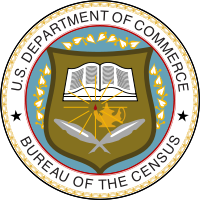 A new Census Bureau report offers a look at the length of time Americans spent in poverty during the four years from 2013 through 2016.
A new Census Bureau report offers a look at the length of time Americans spent in poverty during the four years from 2013 through 2016.
On average, 23.3 percent of the Black population was poor in any given month during the four-year period. This was more than double the rate for non-Hispanic Whites, who had an average poverty rate of 11.4 percent. On average, more than 9.5 million African Americans were living below the poverty level each month.
The study also examined episodic poverty rates during the four-year period. Episodic poverty is defined as a poverty spell lasting two or more consecutive months at any time during the four-year period. For Black Americans, 46.5 percent of the total population was poor for a two-month period during the four years between 2013 and 2016. Some 27 percent of the non-Hispanic White population experienced episodic poverty.
Chronic poverty is defined as being below the poverty income threshold for the entire four years that were surveyed. Some 5.6 percent of the U.S. Black population was poor for the entire four-year period. This was true for only 1.7 percent of the non-Hispanic White population.
Whites tend to move out of poverty at a faster rate than African Americans. Of the 9.9 million African Americans who were poor in 2013, 70 percent were still poor in 2014, 45 percent were still poor in 2015, and 36.2 percent were still poor in 2016. Of the nearly 20 million non-Hispanic Whites who were poor in 2013, 54 percent were still poor a year later, 35.8 percent were still poor in 2015, and 24.1 percent were still poor in 2016.
Education, particularly higher education, is a major factor in poverty status. During the 2013-16 period, an average of 26 percent of the total population who did not complete high school was poor. Some 14 percent of all high school graduates who had not completed any college classes were poor. But only 5.7 percent of college graduates were poor.











I read over the study multiple times. It mentions nothing about education levels, high school or college graduation rates, or anything related to education. Please be advised.